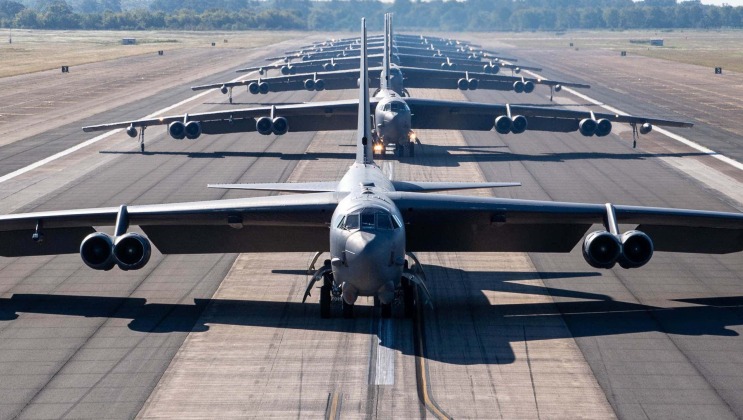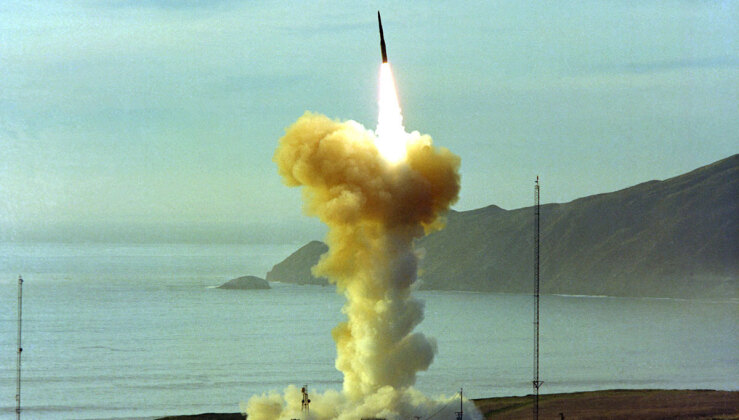News
American Sentinel Intercontinental Range Missile and B-52J Nuclear Bomber Face Uncertain Future
Two of the United States Air Force’s primary strategic weapons programs are facing the growing risk of failure and cancellation, with development of the Sentinel intercontinental range ballistic missile having suffered serious cost overruns and developmental difficulties, while an ambitious deep modernisation program for the country’s primary strategic bomber the B-52 appears at risk due to an inability to keep airframes airworthy. The Air Force has allocated $48.6 billion to modernise its fleet of 72 B-52H bombers, which represent more than half of NATO’s fleet of intercontinental range combat aircraft. With the aircraft having been built in 1962, the modernisation program is intended to extend their use until 2060 by integrating new avionics and Rolls Royce F130 engines. It will also enlarge and modernise their weapons bays to integrate new generations of missiles. The aircraft are set to be re-designated B-52J, which will be the first re-designation since their production reflecting the depth of the modernisation effort.

The Audit of B-52 Diminishing Manufacturing Sources and Material Shortages in late 2023 found that a primary issue affecting the B-52 fleet has been the Air Force’s extreme reliance on cannibalising other planes for spare parts, and industry’s inability to provide new parts in a timely manner. This has seriously cut availability rates in the bomber fleet. The audit report highlighted that a number of firms were ending production of parts for the B-52, meaning that new supplies were often not available at all – thus seriously jeopardising the future of plans to keep the aircraft in service for 36 more years. The contraction of the American industrial base since the end of the Cold War has caused issues across supply chains for a number of programs, causing widespread reliance on foreign components and driving up costs of new weapons programs significantly. A significant part of this has been the widespread creation of natural monopolies as acquisitions budgets have been far from sufficient to sustain multiple contractor firms producing key product types.

In parallel to issues with the B-52, the Air Force’s Sentinel intercontinental range ballistic missile as America’s first clean sheet program of its kind pursued in over 60 years has faced even greater difficulties. The program has exceeded its budget by over a third in just two years, and the cost per missile is now projected at $162 million in 2020 dollars compared to an initial projection of just $118 million. Assistant U.S. Air Force secretary for acquisition Andrew Hunter asserted on January 18 that this was because the initial cost estimate “failed to capture the massive size and scope of the launch facilities and launch control construction effort.” “The funny thing about once-in-a-century projects [is that] there’s a lot that was not appreciated. It was like we were doing it for the first time,” he added.
Cost overruns affecting the Sentinel program have continued to bolster calls within both the civilian and military leadership to terminate it, which would necessitate ending the deployment of ICBMs and cutting of the strategic nuclear triad to just bombers and ballistic missile submarines. This could include diverting funds from the Sentinel program to expanding the fleet of B-21 bombers set to enter service later in the decade and the upcoming Colombia Class ballistic missile submarines. Much as the B-52Hs are by far the oldest bombers still flying anywhere in the world, so too are the LGM-30 Minuteman III missiles the Sentinel program is intended to replace the oldest by a considerable margin having been produced from 1970 to 1978, with no possibility remaining of life extension beyond the early 2030s.












